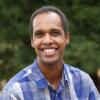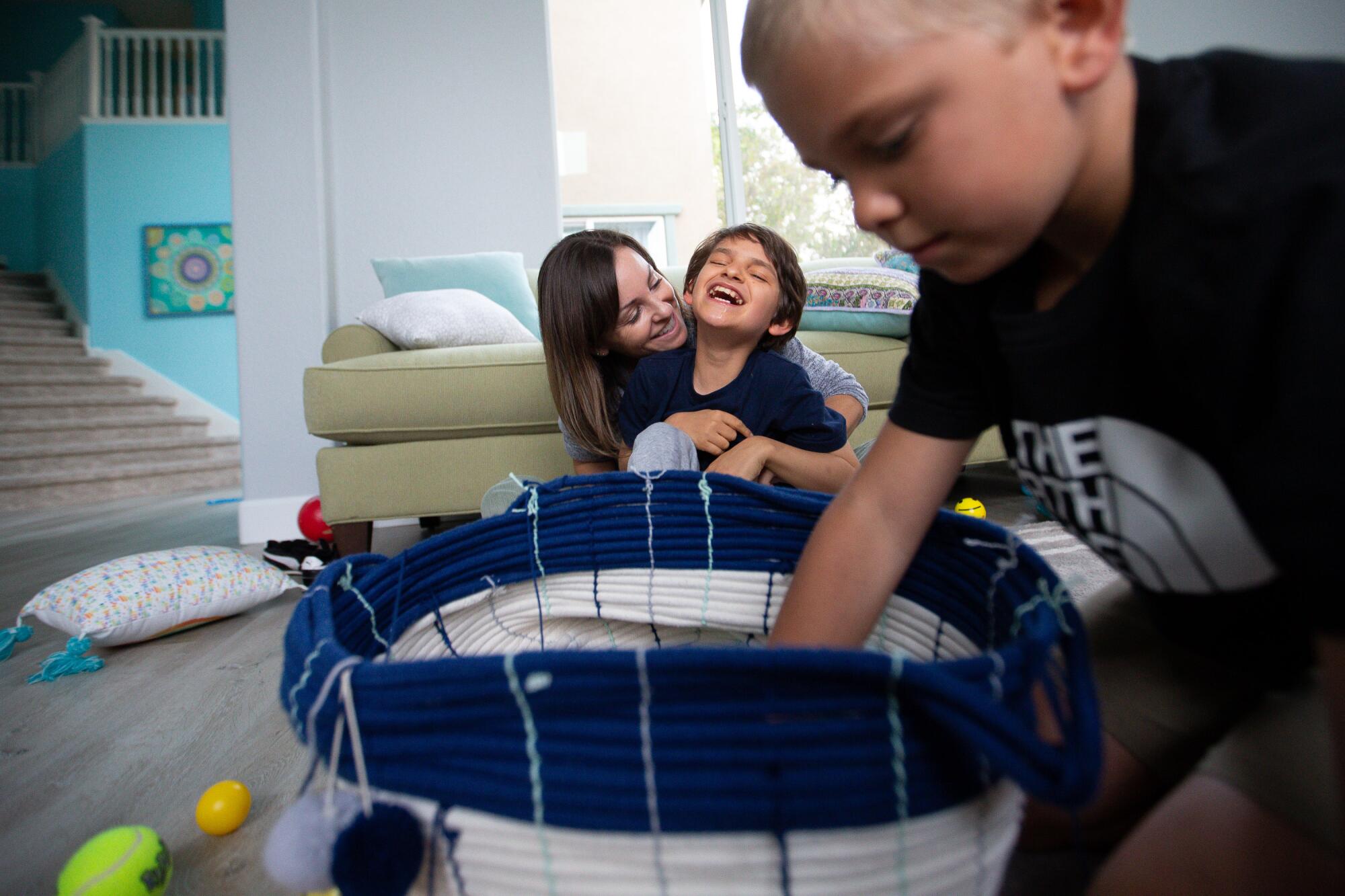
San Diego nonprofit n-Lorem plans to treat patients with rare genetic diseases for free, and for life. It’s an approach some say could revolutionize medicine — if it can be scaled.
Connor Dalby is in many ways your typical 12-year-old boy. He loves dipping his feet in the cool of the ocean and cruising on his bike through his Oceanside neighborhood. He’s mischievous, and he’s got a way of sticking out his chin and grinning madly when goofing off, blue eyes glinting beneath a mess of wavy brown hair.
But Connor can’t speak or walk unassisted. He wears a diaper and can’t feed himself. And seizures grip him nearly every day. So those bike rides and seaside strolls are only possible with the helping hand of a family member.
This story is for subscribers
We offer subscribers exclusive access to our best journalism.
Thank you for your support.
It’s all the result of a genetic mutation no one else in the world is known to have. Simply figuring that out took his mother, Kelley, years of heartache and countless visits with doctors.
The next challenge? Doing something about it.
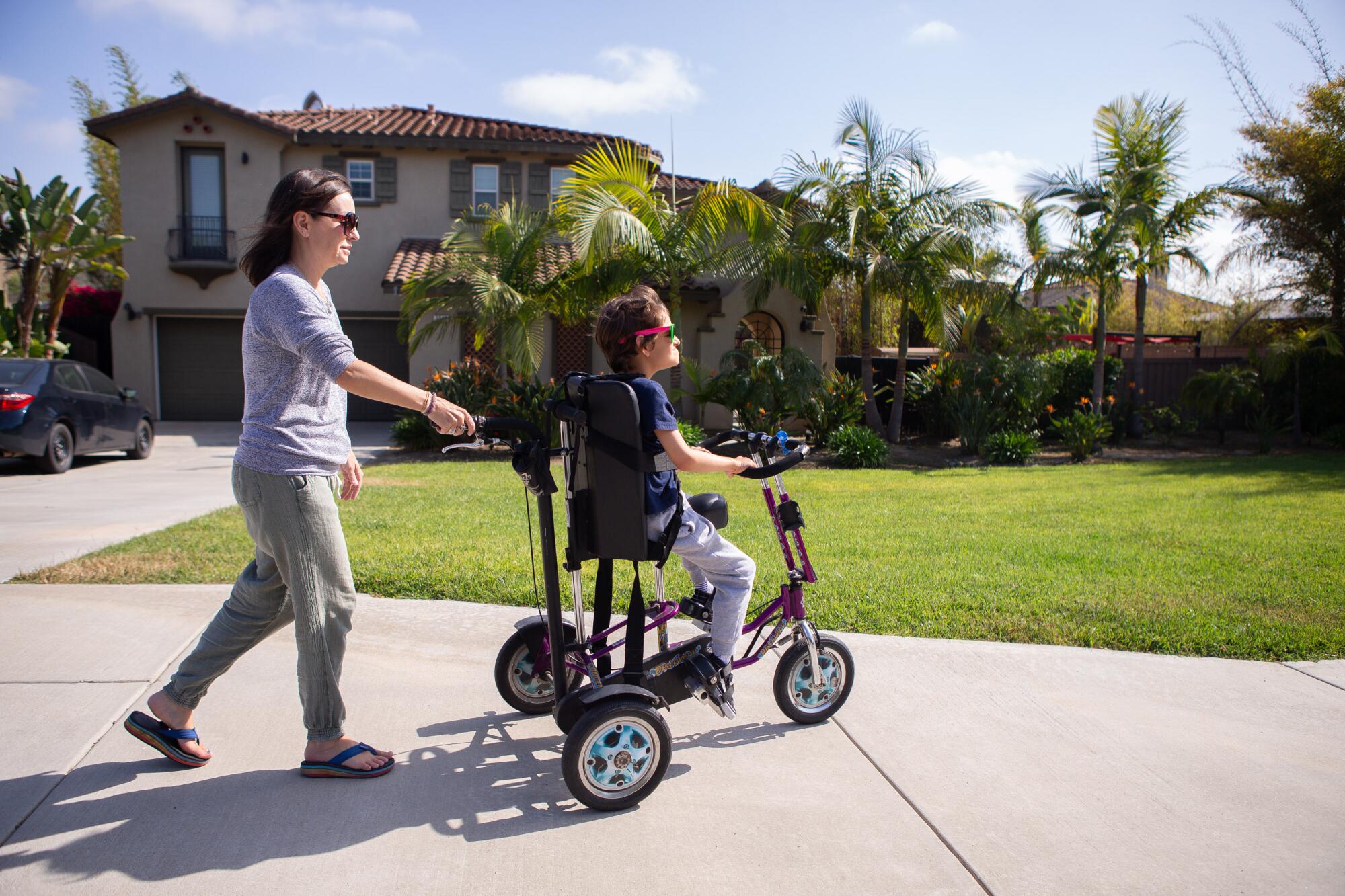
Her search has taken her across the country, and now it’s brought her back to San Diego. Connor is set to be the first patient treated with the support of n-Lorem, a local nonprofit dedicated to developing therapies for patients with rare genetic diseases and offering those treatments for free, for life.
Scientists are currently testing a genetic medicine tailor made for Connor in the lab before applying for Food and Drug Administration permission to treat him. If all goes well, he’ll start treatment around the beginning of next year.
San Diego’s life science community is playing a leading role in helping families like the Dalbys, from the health systems that diagnose patients to the biotech companies that make personalized therapies. If successful, experts say they could revolutionize care for the 1 in 10 Americans living with a rare disease.
“Over the next five years, there’s going be a massive reinvention of the pharmaceutical industry,” said Dr. Stephen Kingsmore, head of Rady Children’s Institute for Genomic Medicine. “There’ll be hundreds of companies doing this for thousands of different diseases. It’s going to just transform pediatric care. We’re going to have the pre-genetic era and the post-genetic era.”
But that will only happen if scientists can figure out how to make these technologies widely available.
Searching for answers

Connor’s first seizure is forever burned into Kelley’s memory. He was 8 months old and she’d just bathed him when his tiny body started trembling in a way she’d never seen.
“He had lost his laugh. He had lost his smile. He didn’t react to anything. I didn’t even think he knew I was his mom.”
— -Kelley Dalby
In the years that followed, Kelley crisscrossed the country searching for any expert who could explain why her baby boy was crying uncontrollably, throwing up and losing weight.
Texas. Michigan. San Francisco. Los Angeles. San Diego. Wherever she went, no one had an answer.
All the while, Connor’s condition only worsened. He was having 50 to 100 seizures a day; sometimes the only way to stop the convulsions was to put him in a medically induced coma. By the age of 3, he was moved into hospice care.
“He had lost his laugh. He had lost his smile. He didn’t react to anything,” Kelley recalls. “I didn’t even think he knew I was his mom.”
Running out of options, she paid to have Connor’s DNA sequenced, hoping the cause of his seizures might be buried deep in his genetic code.
It was. Researchers spotted a mutated copy of a gene called SCN2A, which codes for a protein that regulates the electrical signals brain cells send to each other. Connor’s seizures were the result of those signals going berserk.
But the diagnosis came with a bleak prognosis from a UCLA neurologist: There might be a cure in another 100 years, but not in Connor’s lifetime.
Kelley decided to focus on the first part of that message and ignore the second.
“If it can be treated 100 years from now, that means it’s treatable. Let’s see what we can do today,” she said. “I really, truly believe anything’s possible. And when I hear, ‘No, it can’t be done,’ it motivates me even more.”
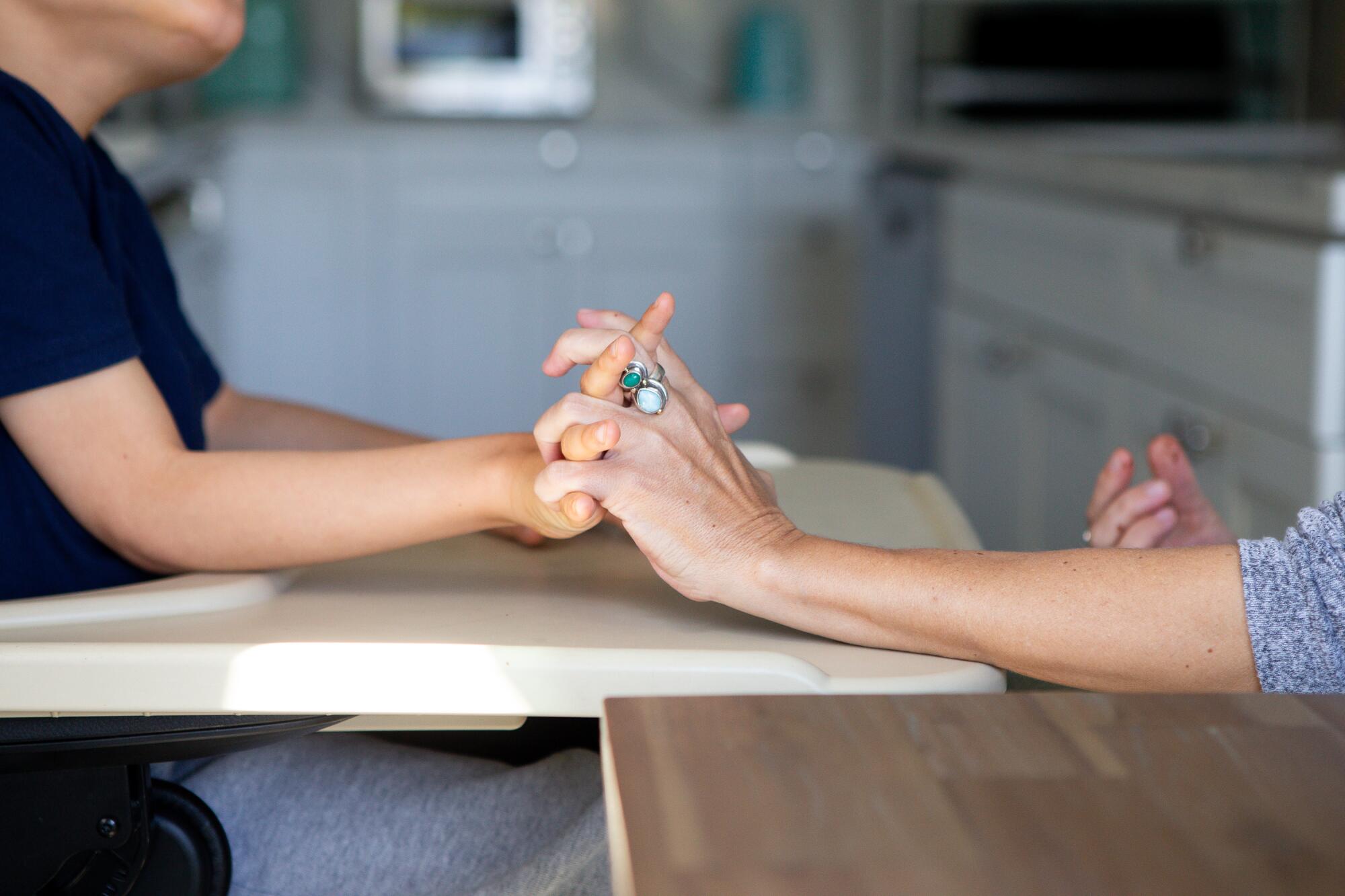
The next few years would put that faith to the test.
Kelley quit her job as a high school English teacher to focus full-time on caring for Connor, spending her days reading scientific studies and cold-calling researchers. She also reached out to other parents whose children had mutations in the same gene — from Australia and the U.K. to Israel and India — to learn from their experiences.
When she couldn’t find a company focused on SCN2A diseases, she co-founded one in 2016, joined by a neuroscientist and the parent of another child with an SCN2A mutation. They named the company RogCon, a portmanteau of the names of their children, Roger and Connor.
But in 2019, Kelley learned that the most promising treatment the company was developing would only work on certain types of mutations, and Connor’s wasn’t one of them.
“Oh my God,” she said. “When I found out that news about how this wouldn’t help him, I really wanted to give up. I was done.”
A reason to hope
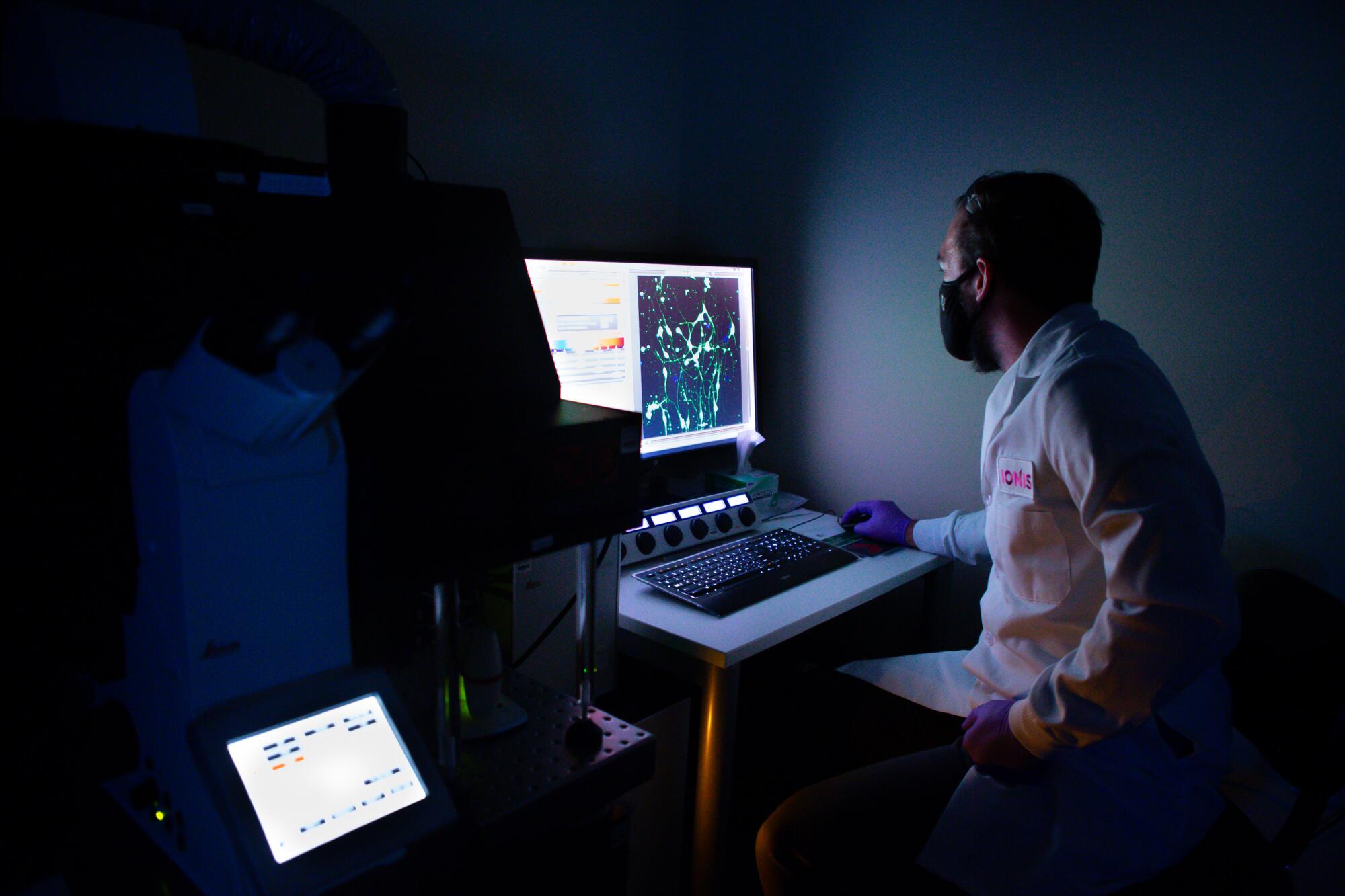
Dr. Stanley Crooke didn’t know Kelley had hit rock bottom when she walked up to him at a scientific conference at downtown’s Manchester Grand Hyatt. But their conversation in May 2019 would give her renewed hope and Crooke an opportunity to enact a vision he’d been harboring for years.
Crooke had been invited to talk about how researchers were using short snippets of DNA and RNA to treat genetic diseases — a field he’d helped pioneer decades ago. These so-called antisense oligonucleotides, or ASOs, were based on a radically simple idea: Genetic diseases need genetic medicines.
You can think of DNA as a secret and ancient message written in four-letter code: A, T, G and C. That message encodes everything from the color of your eyes to how quickly you metabolize caffeine. Misspellings in this blueprint can cause cells to churn out versions of proteins that don’t work, or that take on new and harmful functions. Connor’s mutation, Kelley learned, was causing both problems.
ASOs block disease-causing versions of genes by preventing their instructions from ever being carried out. In certain cases, these drugs can boost gene activation or ensure that a mutated gene produces a functioning protein.
Crooke founded Carlsbad biotech Ionis Pharmaceuticals in 1989 to make these possibilities a reality. In 2016, the company received FDA approval for Spinraza, a drug for spinal muscular atrophy, a deadly disease that destroys nerve cells that control speaking, breathing and walking. A year-long trial showed that infants given Spinraza were more likely to sit, stand and hold up their heads, while babies who go untreated usually die by the age of 2.
He realized the same approach could be adapted for patients with unique mutations, known as n-of-1 diseases, if researchers had their genetic sequence. There was just one problem: Drug companies usually favor large patient populations, and, by extension, big profits.
“How could you possibly make money doing that?” Crooke said. “You’d have to charge $20 million a year or $10 million.”

But he took a different tack, raising funds for a non-profit that would develop and test personalized ASO treatments for diseases with 30 or fewer patients in the world and then offer the drugs for free and for life. Crooke and his wife, Rosanne, contributed $3.2 million of their own money.
“You can make a giant difference in the world by addressing a disease that affects 20 million. But you can still change the world by making one family more functional,” he said. “I’m trying to get people to understand that this is an entirely different but equally valuable kind of a dream.”
When Crooke told Kelley of his plan, it almost sounded too good to be true. After all, she thought, who’d go to the trouble of developing a drug for one kid? But it also sounded like exactly what Connor needed, so she applied to have n-Lorem take on his case.
And they have. Since its launch in January 2020, the group has agreed to help treat about 35 patients nationwide, six of whom live in San Diego. Connor would be the first.
“I called my mom — and I’m not a hugely emotional person — and I was crying. Just like pure joy,” Kelley said. “And then every time I got an update from n-Lorem after that, it’s just immediately tears coming to my eyes. It was so incredibly exciting.”
Uncertain Outcomes
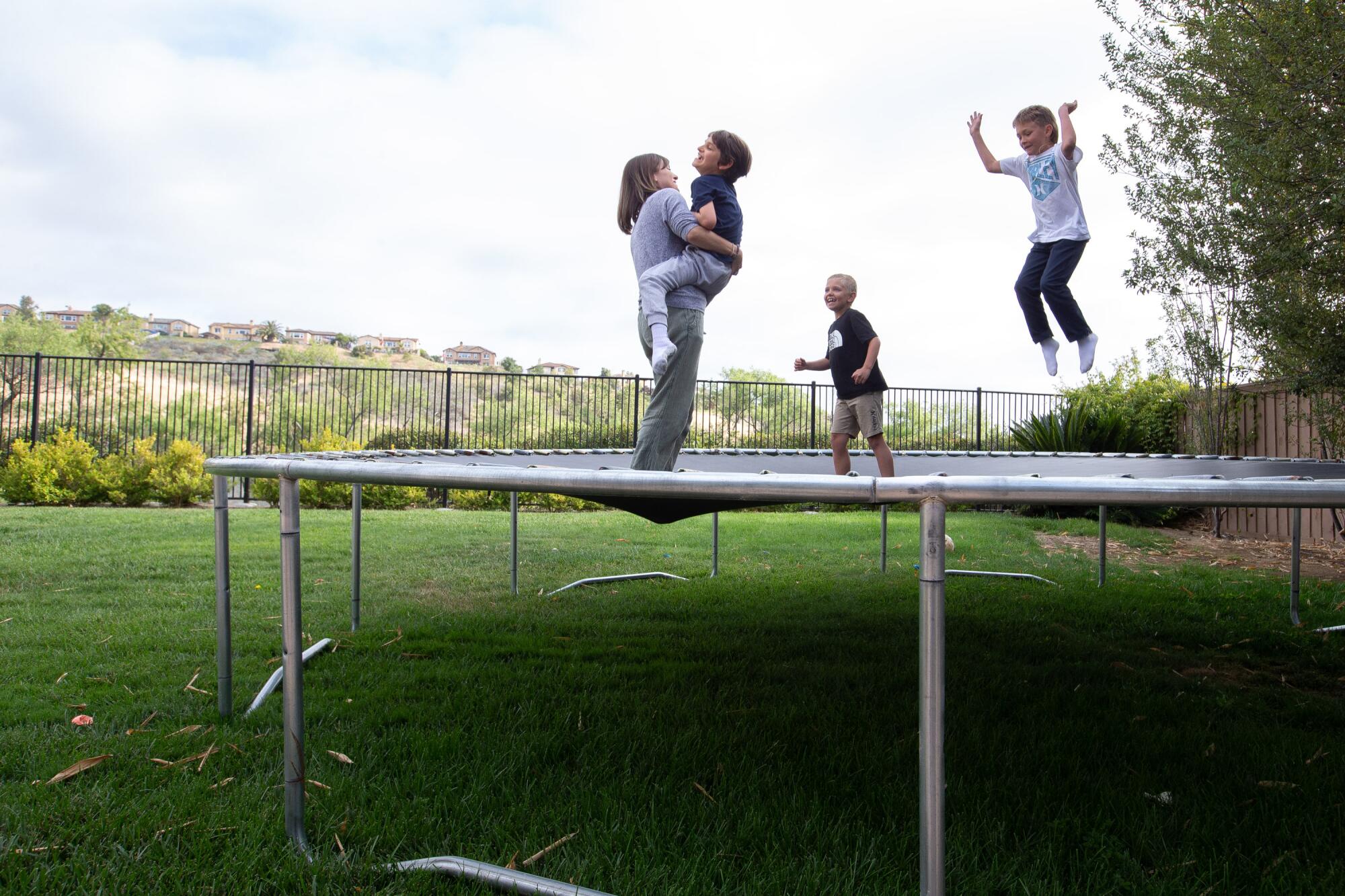
Over the past 12 years, Kelley’s tried everything she could think of to help Connor, from anti-epilepsy drugs to CBD to a specialized diet to a stem cell treatment in Mexico that she knows in hindsight was probably a scam.
The ASO treatment would be the most precise therapy Connor has received to date. Scientists at Ionis are currently testing different molecules in the lab to see which ones best block his faulty copy of SCN2A, allowing his other gene copy to work normally. To do this, they’ve taken a skin sample from Connor and used a series of chemicals to turn his skin cells into stem cells, which they’ve coaxed to grow into neurons, the cells affected by his disease.
Dr. Joseph Gleeson, who is affiliated with UC San Diego and Rady Children’s Institute for Genomic Medicine, would be the one to administer the drug as a series of injections into Connor’s spine, allowing the ASO to reach his nervous system.
Ordinarily, researchers would put a new drug through a gauntlet of clinical trials, testing its safety and effectiveness in large groups of patients before the FDA clears it for use. But that’s not possible when you’ve only got one or a few patients in the world.
“I’ve never been more excited,” said Gleeson, who has spent 30 years studying the genetic causes of brain disease in children. “But I’m also nervous,” he admits, adding that “this is really an experiment as much as it is a patient that’s being given a new, potentially life-saving drug.”
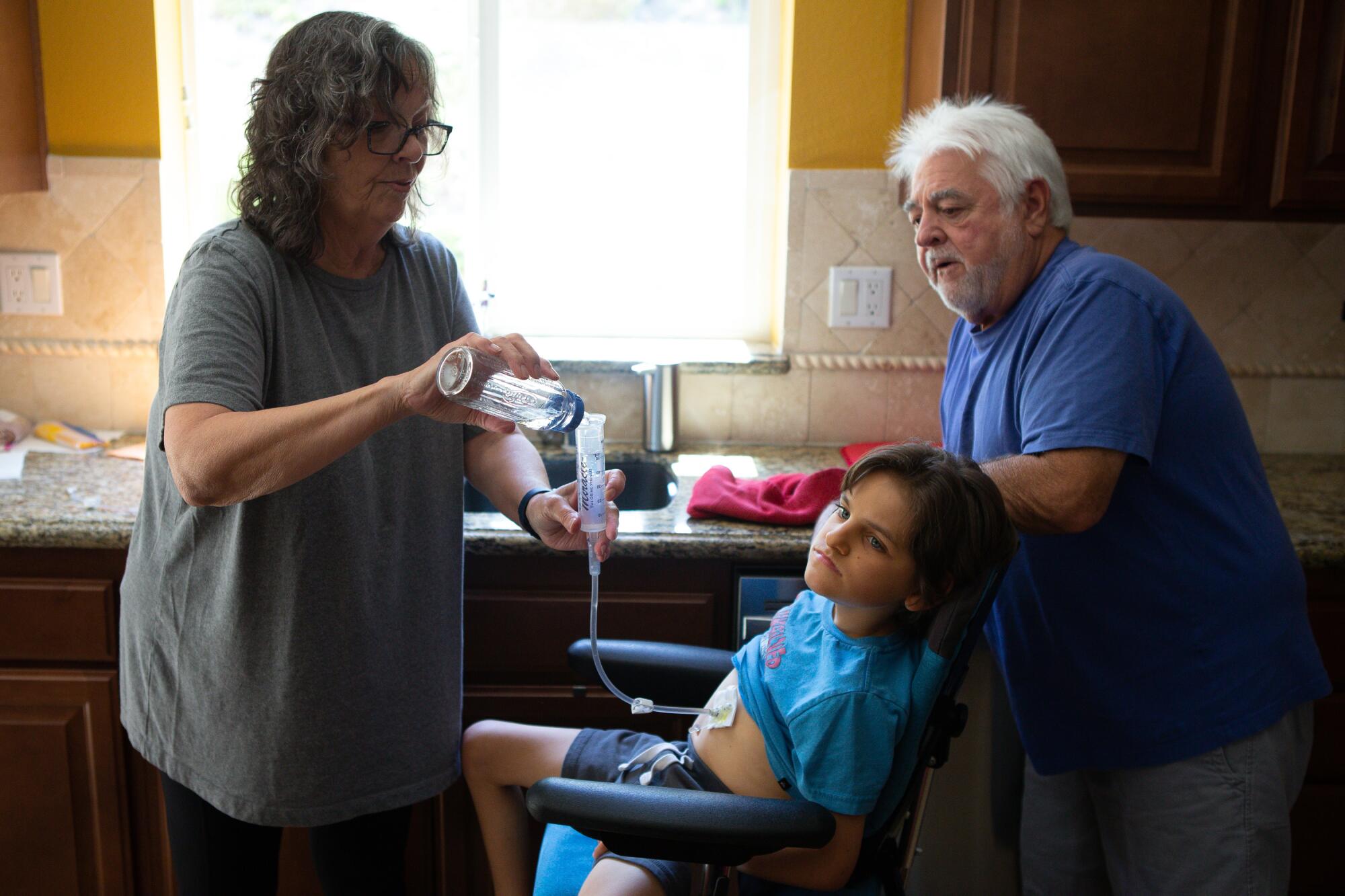
The main goal of Connor’s treatment will be to reduce how many seizures he has each day, and there’s reason to think that could happen. In 2019, 8-year-old Mila Makovec received an ASO to treat a nervous system disorder called Batten disease that left her blind and dealing with regular seizures. The therapy, dubbed Milasen, is believed to be the first-ever drug designed for a single patient, and it was made by San Diego manufacturer TriLink Biotechnologies.
Shortly after treatment, Mila’s seizures began to improve, becoming rarer and shorter. But her gains were short-lived, and her family announced on Feb. 12 that she had passed away.
The most likely explanation is that Mila simply received the treatment too late, according to Dr. Timothy Yu of Boston Children’s Hospital, the physician who treated her.
“You’re stabilizing that population of cells that was dysfunctional but not committed to death,” he said. “But then you’re being hit with the second wave of cells that were dysfunctional and never rescuable. And things just go downhill.”
It’s unclear what that means for Connor, who’s already had tens of thousands of seizures throughout his life. His current condition is stable, and Gleeson says his brain looks normal on an MRI. That suggests the main issue isn’t with how his brain developed, but with how his neurons connect and signal to one another.
But even if the treatment improves Connor’s seizures or helps him feed himself and walk on his own, it could have unwanted side effects. Most SCN2A mutations are linked to autism or epilepsy, and Connor has symptoms of both. Reducing his seizures could come at the expense of worsening his autism symptoms, or vice versa.
A recent trial by Bay Area biotech Ultragenyx illustrates the potential trade-offs. Last October, the company announced that five patients given an ASO treatment for a neurodevelopmental disease began sleeping better, moving more normally and, in two cases, speaking for the first time.
But progress came at a cost. After a high dose of the drug, they all showed signs of paralysis, with some unable to walk or stand. Fortunately, stopping treatment reversed or improved the problem, and the company says it plans to continue administering the drug at a lower dose.
For now, Gleeson’s focus is on striking the right balance between optimism and caution. But tempering expectations won’t be easy. Earlier this year, Kelley got a phone call from the teacher of Connor’s younger brother, Cameron, after he stood up to deliver an important message to his third-grade class.
The announcement: His brother was getting a special medicine that was going to cure him.
Cameron, who’s now 10, says he’s waiting for the day when he, Connor and big brother Chase, 14, can all ride their bikes together.
Hard-fought gains

It’s a Thursday morning in June and Connor is sitting on the carpet. In his left hand, he’s clasping a stick with a bit of yellow rope attached. At the end of the rope, there’s a block of wood that looks like a red barn.
Mary Cunningham is right behind Connor, holding his hands in hers. She grabs a wooden cow with a hole in the middle and places it in his right hand. Then she helps him begin to pull the stick through the cow, stopping halfway.
“What are we going to do? Nope, no help from grandma,” she says, tucking one hand behind her back.
Connor slowly pulls the string all the way through, despite the random jumps and jerks of his hands, and the cow slides down next to the barn.
“Good job,” she coos. Connor grins ever so slightly.

Cunningham, Kelley’s mother, is equal parts doting grandmother and drill sergeant. Connor spends every Monday through Friday, 8 a.m. to 3:30 p.m., at her home going through a battery of neurodevelopmental exercises meant to improve his balance, coordination and reflexes, among other things. The tasks range from stacking plastic cones to walking (with help) through a makeshift maze.
It’s hard work. Connor suffers from a movement disorder that affects his arms and legs, and he doesn’t have the instinct to catch himself when he falls. His nerves also easily get overstimulated. A haircut can send him into hysterics. These exercises are meant to help with those issues and many others.
Before he began the therapy, Connor couldn’t sit up on his own or swallow food. But the most exciting breakthroughs for the Dalbys have come while discovering how to communicate with him. Like when they realized Connor somehow had learned to read and do math on his own. Or when they found out that he knew the ages and birthdays of all his cousins and remembered all the states he’d visited.
The key, they discovered, is to ask Connor a question, present him with different answers on bits of paper or a whiteboard, and let him point to the right response. He can also spell out a reply by pointing to letters and numbers on a wooden board. That’s when the magic happens.
“When we figure out that he knows something, we lose our minds,” Cunningham said. “We’re like screaming and clapping.”
Building new skills is one thing, keeping them another. Because Connor takes the weekends off, he’s usually extra agitated on Mondays and spends much of therapy screaming and squirming. It’s not until later in the week that he mellows out and starts to sail through some of the tasks.
He still has on average two to four seizures a day, usually as he’s getting a bath and just as he’s falling asleep. Minutes before each tremor hits, he’ll often scream. But once the seizure starts, he goes deathly quiet and stiff, pupils so dilated that his blue eyes are nearly eclipsed in darkness.
In those moments, Kelley will rub his back, hold his hand and say what she can to comfort him.
“I’m right here. I love you. You’re OK.”
When each seizure passes, Connor’s toes uncurl, his voice returns and he lets out a giant sigh.
Access to treatment
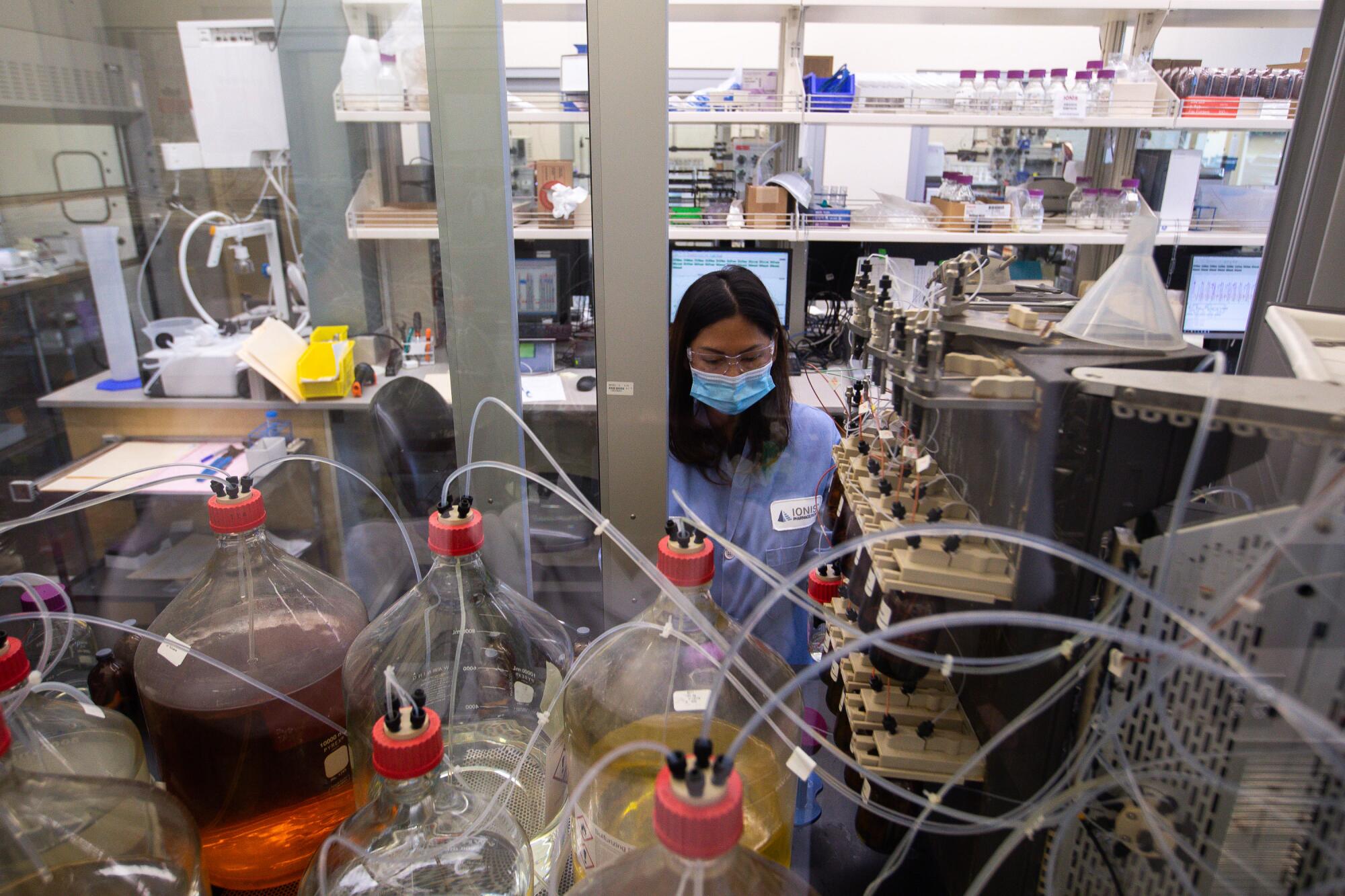
Connor’s family members aren’t the only ones anxiously awaiting his treatment.
“He smiles every time we talk about it,” Kelley said.
But researchers are struggling to make cutting-edge therapies widely available to the many families who need them. It often takes a herculean effort for rare disease patients and their advocates to find solutions. It also takes money. Kelley says her parents affectionately call Connor the multimillion-dollar man for all the things they’ve tried to help him. Simply getting Connor’s DNA sequenced cost $19,000.

“If we’re going to scale this from these heroic efforts to something that’s sustainable and broadly applicable, we need really different strategies,” said Kingsmore of Rady Children’s Institute for Genomic Medicine.
He’s been at the forefront of trying to make rapid genetic sequencing accessible and fast. The genomics institute has sequenced more than 2,000 sick infants across North America, delivering diagnoses in as little as 13.5 hours — a world record. Such speedy diagnoses, he says, can mean the difference between life and death.
Starting January 2022, rapid whole-genome sequencing will become a covered benefit for seriously ill babies whose families are on Medi-Cal, California’s health insurance program for low-income families. As other insurance providers follow suit, scientists will likely learn that what they once thought were n-of-1 diseases are more common. Exactly how common may determine whether the pharmaceutical industry is willing to develop drugs for these disorders, or whether efforts to help the Connors and Milas of the world will be fueled by philanthropy.
Genomic sequencing was used for infants with unexplained symptoms at five California hospitals
There’s a limited number of cases groups like n-Lorem can take on. And that can mean making tough choices. Earlier this year, n-Lorem scrambled to help a seriously ill baby girl in East County, but, before they could develop a treatment, she ended up on life support. Doctors ultimately decided they couldn’t justify continuing life support for a drug that was still several months away and wasn’t guaranteed to work.
“I think we’re going to have a lot of ethical issues like this,” said Gleeson, who is now part of the non-profit’s access to treatment committee. So is Yu, whose lab has received 350 personal pleas from families.
One day at a time
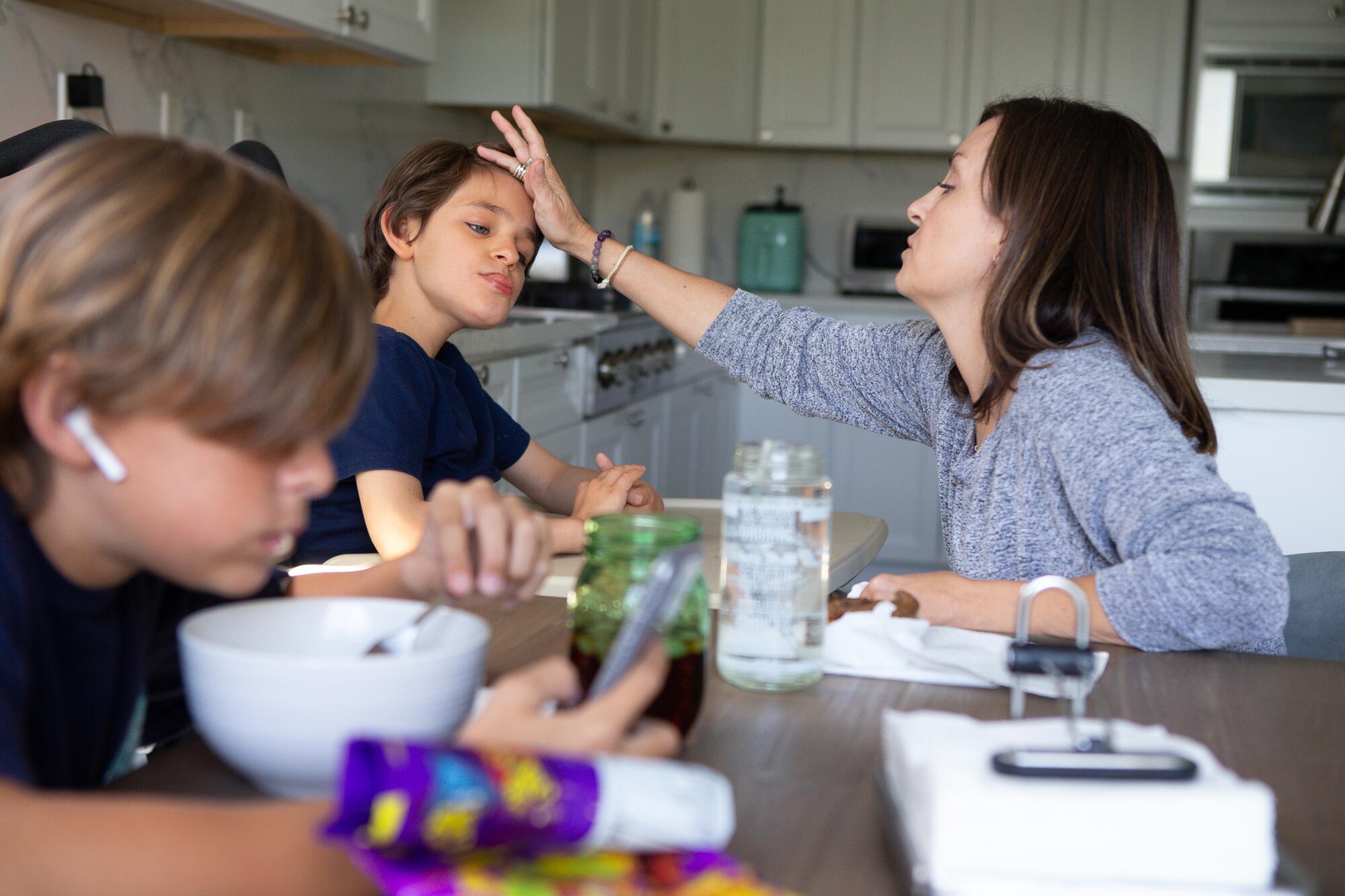
Despite all the hope and hype surrounding Connor’s future treatment, life, for now, goes on as usual for the Dalbys, with Connor spending most of each day trying to build and maintain skills other boys his age take for granted.
Mealtime is a welcome break. Kelley sits him down in a highchair and heats up a bowl of stew filled with coconut milk, black beans and loads of veggies. It’s part of a special diet meant to reduce his risk of seizures, with the exact timing of every meal and snack spelled out in a spreadsheet — though she has it all memorized.
Before Kelley guides the spoonful of stew to his mouth, there’s just one thing missing: music. She’s got a go-to list of songs that calm Connor down, and a kid’s album tune called “Connor is the best boy” is queued up. It’s a song that seems made for him and no one else — just like the treatment the Dalbys have pinned their hopes to.
“Connor is the best boy, the best boy, the best boy. Yes, he is the best boy in the whole wide world.”
Get U-T Business in your inbox on Mondays
Get ready for your week with the week’s top business stories from San Diego and California, in your inbox Monday mornings.
You may occasionally receive promotional content from the San Diego Union-Tribune.

